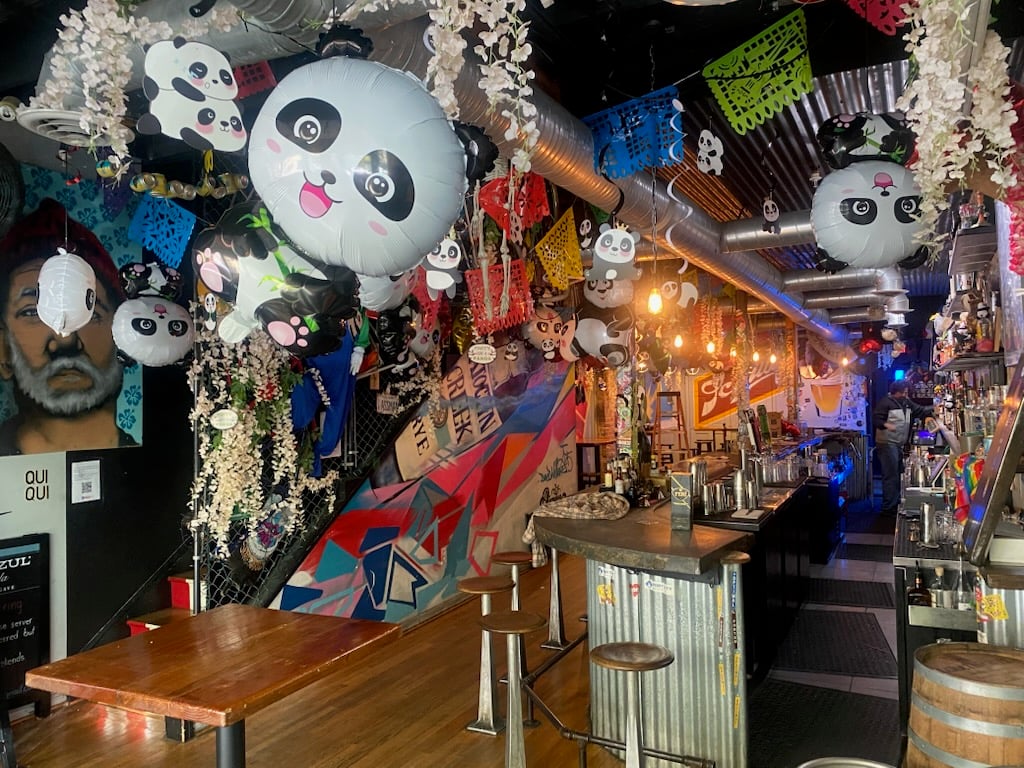It almost feels unreal: DC without pandas. Since Ling-Ling and Hsing-Hsing, the National Zoo’s first giant pandas, arrived as a gift from China in 1972, the National Zoo has scarcely spent a year without the beloved animals, which over the decades have become a crucial part of the city’s identity. And now the District’s panda-bear era could be over. With the three most recent animals having returned to China and no replacements currently on the way, Washington is confronting a future without its signature beasts. Here’s a look at what that might mean for the zoo, the city, and the countless people who adore the cuddly creatures.
Wait, DC really isn’t going to have pandas anymore?
Not for the foreseeable future. On November 8, Mei Xiang, Tian Tian, and Xiao Qi Ji departed for their new home. The pandas have always been here as part of a loan agreement that returns them to their native country after a period of time. But unlike in the past, there’s no plan to replace the animals. The National Zoo says it will discuss a future panda program with the China Wildlife Conservation Association, but with relations between our governments strained, China seems to be pulling its pandas back from American zoos. By the end of the year, it’s likely that the last pandas in the US—Lun Lun and Yang Yang at Zoo Atlanta—will also be heading home.
So what will happen to the zoo’s panda center?
It will sit empty for now, but the Rubenstein Family Giant Panda Habitat isn’t going anywhere. In fact, the zoo says it’s embarking on a $1.7 million renovation project focused on the sizable indoor space, with possible future panda residents in mind. The enclosure will get new walls, a waterfall, and a climbing wall, among other features. And the team of zookeepers who have been caring for the pandas will transition to looking after other animals in the Asia Trail exhibit, such as the clouded leopard, Asian small-clawed otter, and red panda.
What about all of the panda branding and merch?
The panda is the undisputed symbol of the zoo and closely associated with DC in general. (Remember when Metro’s old paper farecards had pandas on them?) The zoo may shift away from panda-themed gear, which makes up about 30 percent of its merchandise, and is taking down panda signage to make clear that there are no longer pandas at the zoo. A spokesperson confirms that giant pandas won’t be used in its marketing anymore.
How do you move pandas across the planet, anyway?
In a huge Boeing 777 FedEx plane called the “Panda Express.” The pandas will ride comfortably in enclosed crates, and their carry-on luggage consists of 300 pounds of bamboo, biscuits, fruit, and vegetables. Smithsonian zookeepers will serve as flight attendants for the 19-hour journey, which takes Mei Xiang, Tian Tian, and Xiao Qi Ji to the Wolong National Nature Reserve in Sichuan province. They should be quite happy there: The UNESCO-protected area is home to a third of the world’s giant pandas.
Okay, so no more pandas. What should I see at the zoo instead?
The National Zoo is home to nearly 400 species, though few have the same roly-poly charisma. There are the red pandas, of course, and the fluffy, grumpy-looking Pallas’s cats and baby gorilla Zahra (born in May) are popular attractions. Naked mole rats are fascinatingly odd. But our pick? The under-sung Andean bears—also known as spectacled bears for their cute facial-fur pattern—who currently have a pair of adorable cubs. They’d look fantastic printed on a Metro card.

















